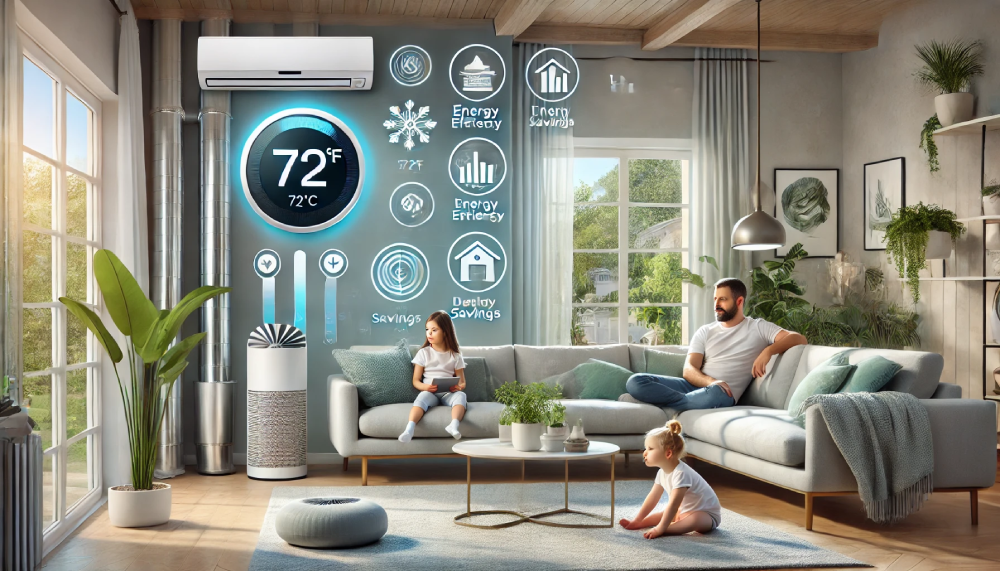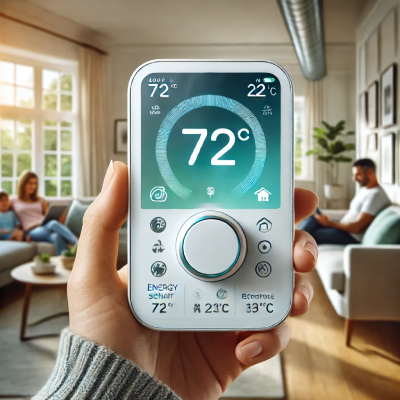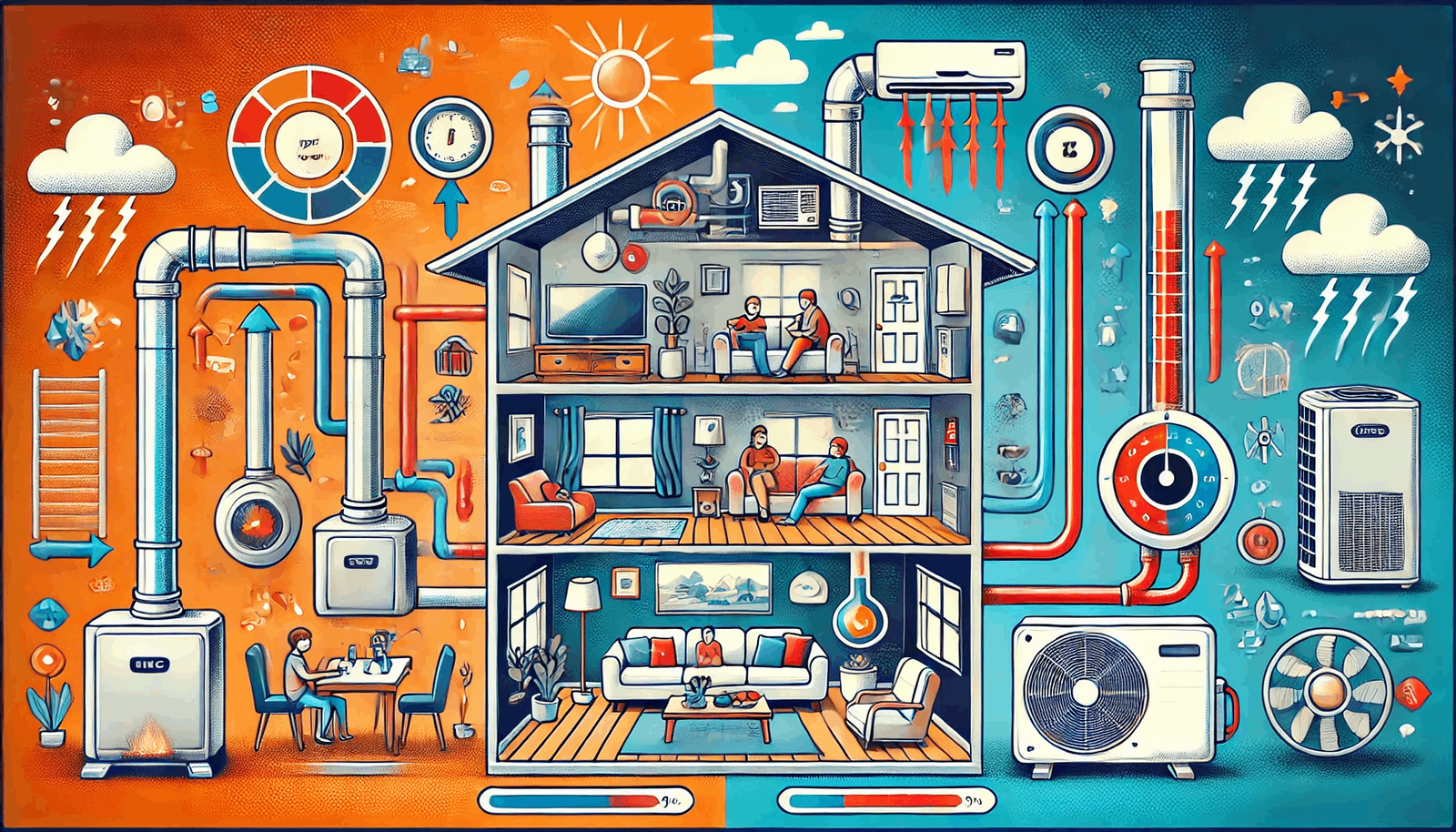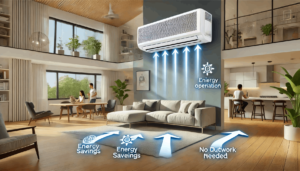Introduction
HVAC systems, which stands for Heating, Ventilation, and Air Conditioning, are essential for maintaining a comfortable indoor environment throughout the year. These systems play a crucial role in regulating temperature, humidity, and air quality in homes and commercial spaces. By ensuring that your living or working environment is consistently comfortable, HVAC systems contribute significantly to overall well-being and productivity.
Heating and air conditioning systems work in tandem to create a balanced indoor climate. During colder months, heating systems provide warmth to combat the chill outside, ensuring that you stay cozy indoors. Conversely, when temperatures rise, air conditioning systems kick in to cool down the space, providing relief from the heat. The seamless integration of these two systems allows for year-round comfort, adjusting to the changing seasons and ensuring that your home remains a sanctuary from the elements. Understanding how these systems work together is essential for effective HVAC management and maximizing energy efficiency, ultimately leading to a more pleasant living experience.
Understanding HVAC Systems
Definition of HVAC (Heating, Ventilation, and Air Conditioning)
HVAC stands for Heating, Ventilation, and Air Conditioning. This comprehensive system is designed to regulate indoor temperatures and air quality, ensuring a comfortable and healthy environment for occupants. HVAC systems not only provide heating in winter and cooling in summer but also facilitate proper ventilation to maintain air quality by circulating fresh air and removing contaminants. By effectively combining these three essential functions, HVAC systems play a critical role in both residential and commercial settings.
Overview of System Components
An effective HVAC system consists of several key components that work together to deliver comfort and efficiency. Here’s a brief overview of each:
- Furnaces: Furnaces are a primary heating component in many HVAC systems. They heat air through combustion (gas or oil) or electric heating elements and distribute it throughout the home via ductwork. Furnaces come in various types, including forced-air, electric, and heat pumps, each offering unique benefits and efficiencies.
- Air Conditioners: Air conditioners are responsible for cooling indoor spaces. They work by removing heat from the indoor air and transferring it outside, creating a comfortable environment. Central air conditioning systems utilize ducts to distribute cool air throughout the home, while ductless systems are ideal for specific areas or smaller spaces.
- Thermostats: The thermostat is the control center of the HVAC system. It allows users to set and adjust the desired temperature for their home. Modern thermostats can be programmable or smart, offering features like remote access, energy-saving modes, and customizable schedules to enhance comfort and efficiency.
- Ductwork: Ductwork is the network of channels that carries heated or cooled air throughout the building. Properly designed and sealed duct systems are crucial for efficient air distribution and can significantly impact the overall performance of the HVAC system. Regular maintenance of ductwork is essential to prevent leaks, blockages, and ensure optimal airflow.
Together, these components create a robust HVAC system that provides comfort, enhances air quality, and promotes energy efficiency, making it vital for any home or business. Understanding the individual roles of these components can help homeowners make informed decisions about maintenance, repairs, and upgrades for their HVAC systems.
How Heating Systems Function
Description of Different Heating Methods
Heating systems come in various forms, each utilizing different methods to generate and distribute heat. Here are the most common types:
- Furnaces: Furnaces are one of the most prevalent heating methods in residential settings. They work by burning fuel (such as natural gas, propane, or oil) or using electricity to create heat. The heated air is then blown through ductwork and into the living spaces. Furnaces can be categorized into several types, including:
- Gas Furnaces: These use natural gas or propane to produce heat and are known for their efficiency and affordability.
- Electric Furnaces: These use electric heating elements to warm the air. While they are typically less expensive to install, they can be more costly to operate in areas with high electricity rates.
- Oil Furnaces: These burn oil to generate heat, primarily used in regions where natural gas is not available.
- Heat Pumps: Heat pumps are versatile systems that can both heat and cool spaces. In heating mode, they extract heat from the outside air (even in cold temperatures) and transfer it indoors. There are two main types:
- Air Source Heat Pumps: These are the most common and work by absorbing heat from the outside air and releasing it inside.
- Ground Source (Geothermal) Heat Pumps: These systems draw heat from the ground, which maintains a relatively constant temperature throughout the year, making them highly efficient.
- Radiant Heating: This method involves heating elements or hot water tubes installed beneath floors or within walls. As the heat radiates from these surfaces, it warms the room evenly. Radiant heating can be powered by electricity, hot water, or steam.
- Baseboard Heaters: These are electric or hot water heating units installed along the baseboards of rooms. They provide localized heating and can be an efficient option for smaller spaces.
Explanation of the Heating Cycle and How Heat Is Distributed
The heating cycle begins when the thermostat detects that the indoor temperature has dropped below the set point. Here’s how the process unfolds:
- Thermostat Activation: When the temperature falls below the desired setting, the thermostat sends a signal to the heating system to activate.
- Heat Generation: Depending on the type of heating system, heat is generated through combustion in furnaces or by transferring heat in heat pumps. In radiant systems, water is heated in a boiler and circulated through pipes.
- Heat Distribution:
- In forced-air systems, the heated air is pushed through ductwork by a blower fan and distributed into various rooms via vents. The warm air rises and displaces cooler air, ensuring an even temperature throughout the space.
- In radiant systems, the warmth radiates directly from heated surfaces, providing a gentle and consistent heating experience.
- Temperature Regulation: As the indoor temperature reaches the set point on the thermostat, the system shuts off, conserving energy until heating is needed again.
- Ventilation Considerations: Some heating systems also incorporate ventilation to bring in fresh air, maintaining good indoor air quality while distributing heat.
Understanding how heating systems function and their heating cycles helps homeowners appreciate the technology behind their comfort and can inform decisions regarding maintenance, repairs, or system upgrades. Regular maintenance ensures efficient operation and longevity of heating systems, contributing to a warm and inviting home during cold months.

How Air Conditioning Systems Function
Air conditioning systems are designed to cool indoor spaces by removing heat and humidity from the air, providing relief during hot weather. Understanding the components involved and the cooling cycle is essential for appreciating how these systems work.
Components Involved in Cooling
- Compressor: The compressor is often referred to as the “heart” of the air conditioning system. It is located outside the building and is responsible for compressing the refrigerant gas, raising its pressure and temperature. This high-pressure gas is then sent to the condenser.
- Condenser: The condenser is another outdoor component that dissipates heat absorbed from inside the building. As the high-pressure refrigerant gas flows through the condenser coils, it releases heat to the outdoor air and transforms into a liquid state.
- Evaporator: Located inside the building, the evaporator coil is where the cooling process takes place. The liquid refrigerant from the condenser enters the evaporator coil, where it absorbs heat from the indoor air. As it absorbs heat, the refrigerant evaporates back into a gas, thus cooling the air that passes over the coil.
- Expansion Valve: The expansion valve regulates the flow of refrigerant into the evaporator coil. It lowers the pressure of the refrigerant, allowing it to expand and cool before entering the evaporator.
- Blower Fan: The blower fan circulates warm indoor air over the evaporator coil, facilitating heat exchange. As the air passes over the cooled coils, it loses heat, and the resulting cool air is blown back into the living spaces through ductwork or vents.
The Cooling Cycle
The cooling cycle involves several steps that transform warm indoor air into cool, comfortable air:
- Thermostat Activation: When the indoor temperature rises above the set point on the thermostat, it signals the air conditioning system to turn on.
- Refrigerant Compression: The compressor activates, compressing the refrigerant gas, which increases its pressure and temperature. The high-pressure gas is then sent to the condenser.
- Heat Dissipation: In the condenser, the hot refrigerant gas releases heat to the outdoor air, condensing into a high-pressure liquid. This process effectively removes heat from the refrigerant.
- Expansion of Refrigerant: The high-pressure liquid refrigerant flows through the expansion valve, where its pressure drops. This causes the refrigerant to cool and partially evaporate.
- Heat Absorption: The low-pressure refrigerant enters the evaporator coil. As warm indoor air is blown over the coil by the blower fan, the refrigerant absorbs heat from the air, evaporating into a gas.
- Cool Air Distribution: The cooled air is then circulated back into the indoor space through vents, lowering the overall temperature and improving comfort.
- Cycle Continuation: This process continues until the thermostat senses that the desired temperature has been reached. At this point, the system will shut off, conserving energy until cooling is needed again.
Understanding how air conditioning systems function and the components involved helps homeowners appreciate the technology that keeps their living spaces comfortable during hot weather. Regular maintenance of these systems is crucial to ensure efficient operation, extend their lifespan, and maintain optimal indoor air quality.
The Role of Thermostats in HVAC Systems
Thermostats are integral components of HVAC systems, serving as the control center for regulating indoor temperatures. Their proper functioning ensures that your home remains comfortable regardless of external weather conditions. Understanding their importance and the advancements in thermostat technology can help homeowners maximize comfort and energy efficiency.
Importance of Thermostats in Regulating Temperature
Thermostats act as the bridge between the desired indoor temperature set by the homeowner and the actual temperature within the space. Here are some key roles they play:
- Temperature Monitoring: Thermostats continuously monitor the ambient temperature of the home. When the temperature deviates from the set point, the thermostat sends a signal to the HVAC system to either activate or deactivate heating or cooling functions.
- System Control: By managing the HVAC system’s operation, thermostats ensure that the home remains at a comfortable temperature. They control the heating or cooling cycles based on real-time temperature readings, allowing for precise climate control.
- Energy Efficiency: An efficient thermostat reduces energy consumption by ensuring that heating and cooling systems operate only when necessary. This not only lowers energy bills but also extends the lifespan of HVAC equipment by preventing excessive wear and tear.

How Programmable and Smart Thermostats Enhance Comfort and Efficiency
The evolution of thermostat technology has introduced programmable and smart thermostats, which offer advanced features that significantly enhance both comfort and energy efficiency.
- Programmable Thermostats:
- Custom Schedules: Programmable thermostats allow users to set heating and cooling schedules based on their daily routines. For instance, homeowners can program the thermostat to lower the temperature during the day when no one is home and raise it before they return. This level of customization helps optimize energy usage.
- Energy Savings: By reducing unnecessary heating or cooling during unoccupied times, programmable thermostats can lead to significant energy savings, often reducing utility bills by 10-30%.
- Smart Thermostats:
- Remote Access: Smart thermostats connect to Wi-Fi, allowing homeowners to control their HVAC systems remotely via smartphone apps. This feature enables users to adjust settings while away from home, ensuring comfort upon return.
- Learning Capabilities: Many smart thermostats have learning algorithms that adapt to user behavior over time. They can automatically adjust the temperature based on when the home is occupied or unoccupied, further optimizing energy efficiency.
- Energy Monitoring: Smart thermostats often provide energy usage reports, helping homeowners understand their consumption patterns and identify opportunities for savings.
- Integration with Smart Home Systems: These thermostats can be integrated with other smart home devices, such as voice assistants and smart lighting systems, to create a more seamless and automated living environment.
In summary, thermostats are vital for maintaining a comfortable indoor climate by regulating the operation of HVAC systems. With advancements like programmable and smart thermostats, homeowners can enjoy enhanced control over their environment while benefiting from improved energy efficiency and convenience. Regular maintenance and upgrades to modern thermostat technology can lead to a more comfortable and cost-effective home.
The Interaction Between Heating and Air Conditioning
Heating and air conditioning systems are often viewed as separate entities, but they play a crucial role in maintaining indoor comfort throughout the year. Understanding how these systems interact, especially during transitional seasons, is essential for optimizing performance and energy efficiency.
Explanation of How Both Systems Can Work Together
During transitional seasons—such as spring and fall—outdoor temperatures can fluctuate dramatically, requiring both heating and cooling capabilities to maintain a comfortable indoor environment. Here’s how these systems can work together:
- Temperature Regulation: On cooler days, the heating system may need to kick in during the morning or evening, while air conditioning may be necessary during warmer afternoons. A well-functioning HVAC system can automatically switch between heating and cooling modes based on the temperature set by the thermostat, ensuring consistent comfort without the need for manual adjustments.
- Humidity Control: During transitional seasons, humidity levels can vary. Air conditioning systems not only cool the air but also help reduce humidity, which can make the indoor environment more comfortable. Conversely, heating systems can also impact humidity levels; some heating methods can dry out the air. A balanced HVAC system that effectively manages both heating and cooling can provide optimal humidity control.
- Zoning Systems: Many modern HVAC systems are designed with zoning capabilities, allowing for different areas of a home to be heated or cooled independently. This feature is particularly beneficial during transitional seasons, as certain rooms may require heating while others may need cooling. Thermostats in each zone can be programmed to optimize comfort and energy use.
Importance of Proper Maintenance for Both Systems to Ensure Seamless Operation
To ensure that heating and air conditioning systems work together effectively, proper maintenance is crucial. Here’s why:
- Efficiency and Reliability: Regular maintenance helps keep both systems operating efficiently. Cleaning components, checking refrigerant levels, and ensuring that mechanical parts are in good condition can prevent breakdowns and reduce energy consumption.
- Avoiding System Conflicts: Without proper maintenance, issues in one system can affect the performance of the other. For example, a malfunctioning thermostat may cause the heating system to run when cooling is needed, leading to discomfort and increased energy bills. Regular inspections can identify potential conflicts before they escalate.
- Longevity of Equipment: Routine maintenance prolongs the lifespan of both heating and cooling systems. By addressing minor issues early and ensuring that both systems are in optimal working condition, homeowners can avoid costly repairs and replacements.
- Improved Air Quality: HVAC maintenance includes checking and replacing air filters, cleaning coils, and inspecting ductwork. These tasks improve indoor air quality by reducing allergens and pollutants, benefiting both heating and cooling functions.
Benefits of a Well-Functioning HVAC System
A well-functioning HVAC (Heating, Ventilation, and Air Conditioning) system is essential for maintaining a comfortable and healthy indoor environment. The benefits extend beyond just comfort; they also encompass energy efficiency, cost savings, and overall well-being. Here’s a closer look at the key advantages of a properly maintained HVAC system.
Improved Indoor Comfort and Air Quality
- Consistent Temperature Control: A well-functioning HVAC system effectively maintains a consistent indoor temperature, regardless of external weather conditions. This consistency enhances comfort levels throughout the home, ensuring that every room is warm in the winter and cool in the summer.
- Humidity Regulation: HVAC systems play a crucial role in regulating indoor humidity levels. Proper humidity control prevents excessive moisture, which can lead to mold growth and discomfort, while also avoiding overly dry conditions that can cause skin irritation and respiratory issues.
- Enhanced Air Quality: A properly maintained HVAC system filters out pollutants, allergens, and dust particles, significantly improving indoor air quality. This is particularly beneficial for individuals with allergies or respiratory conditions, as clean air contributes to overall health and well-being.
- Better Ventilation: Modern HVAC systems provide effective ventilation, ensuring that fresh air circulates throughout the home. This process helps to remove stale air, odors, and indoor pollutants, creating a healthier living environment.
Energy Efficiency and Cost Savings
- Lower Energy Bills: An efficiently operating HVAC system uses less energy to maintain comfort levels, leading to significant cost savings on utility bills. Regular maintenance, such as cleaning filters and inspecting components, can prevent energy waste and keep systems running efficiently.
- Extended Lifespan of Equipment: Routine maintenance helps prevent breakdowns and costly repairs, extending the lifespan of HVAC equipment. Well-maintained systems are less likely to experience major failures, allowing homeowners to maximize their investment in heating and cooling solutions.
- Increased System Efficiency: A well-functioning HVAC system operates at peak efficiency, which means it consumes less energy to provide the same level of comfort. This efficiency not only reduces environmental impact but also contributes to lower operating costs.
- Incentives for Energy Efficiency: Many regions offer incentives, rebates, or tax credits for homeowners who upgrade to energy-efficient HVAC systems or conduct regular maintenance. These programs can further enhance cost savings while promoting sustainable practices.
Conclusion
In summary, heating and air conditioning systems play a vital role in creating a comfortable and healthy indoor environment. While often perceived as distinct components, these systems work in harmony to regulate temperature and maintain air quality throughout the year. Understanding how they interact, particularly during transitional seasons, highlights the importance of both heating and cooling capabilities in optimizing indoor comfort.
Key points include:
- Interdependence of Systems: Heating and air conditioning systems complement each other by addressing temperature variations and humidity levels, ensuring a balanced and comfortable atmosphere.
- Advanced Technology: Modern thermostats, especially programmable and smart versions, enhance the synergy between heating and cooling by allowing for tailored temperature control and energy efficiency.
- Importance of Maintenance: Regular maintenance is crucial for both systems to operate seamlessly. It ensures efficiency, reliability, and longevity while improving indoor air quality and reducing energy costs.
To maximize the performance of your HVAC systems and ensure year-round comfort, it is essential to prioritize regular maintenance. Scheduling routine inspections and addressing any issues promptly will help maintain the efficiency of both heating and air conditioning systems. By taking these proactive steps, homeowners can enjoy a comfortable living space, lower energy bills, and peace of mind knowing their systems are operating at their best.
Resources
Heating and Cooling | Department of Energy
Hiring Qualified Contractors | Department of Energy
How to Keep Your HVAC System Working Efficiently | ENERGY STAR
Air Conditioner Maintenance | AC Maintenance | Carrier
Lennox: Air Conditioning and Heating Maintenance
North American Technician Excellence (NATE): Why NATE Certification Matters




